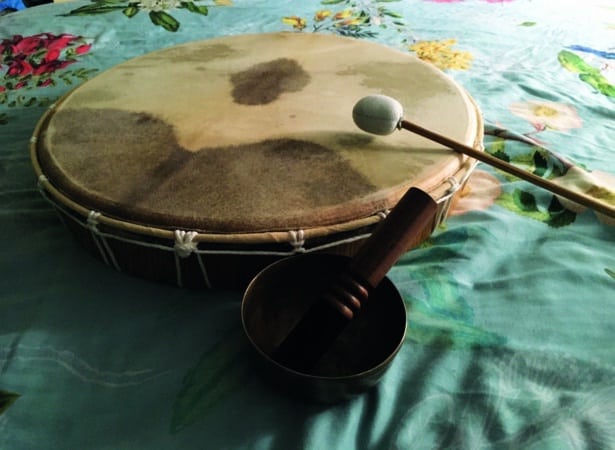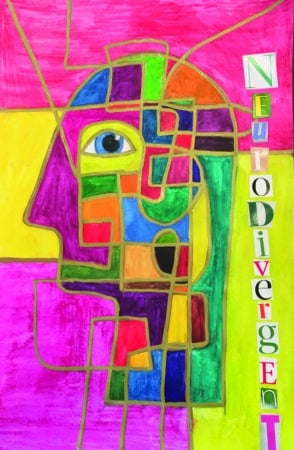
I read an article by Chris Schultz on The Spinoff recently. It was entitled “Tempers seem shorter than ever these days. Is it always going to be like this?” It was an interesting read for many reasons. It discussed the long-term effect of global and local events on our nation’s collective ability to be nice to each other — we’re not doing so well, apparently.
Chris Schultz’s article highlighted that many people are feeling disempowered and shaken up by recent weather events and their mental health tanks are getting close to empty. I have a very bad habit of driving around in my car while my fuel gauge flashes a warning at me that I really should fill up soon. I suspect that for many people lately they have been ignoring the warning signs from their overwhelmed nervous systems. They imagine they can keep going for ever without stopping to refuel.
Even without any other influence our modern lifestyles tend to push our bodies into constant fight / flight. Our nervous system has two operating modes: ‘fight / flight / freeze’ and ‘rest and digest’. Sometimes, it is possible for us to get stuck in the fight / flight mode and our bodies never get a chance to return to the rest/digest state, or homeostasis.
The days of encountering a saber-toothed tiger and needing to run for our lives have been and gone but our nervous system still detects things that it perceives as a threat. This could be the experience of lateness due to being stuck in traffic on the way to work or to an important appointment. Our nervous system insists on flooding our body with stress hormones as if we really did need to escape that tiger. And, unlike a real-life encounter with a dangerous animal, there is very little we can do to escape the stressors of modern life; we just have to endure them.
The link between stress and heart disease, stroke and other serious illness is well documented (Steptoe & Kivimäki, 2012). Interestingly, stress also has a profound influence on our immune system and our ability to fight infection as well as our mental and emotional wellbeing (Seiler et al., 2020).
As neurodivergent people we already experience higher levels of stress than the general population. Our particular brain wiring and chemistry means that navigating society can be challenging. Our trauma buckets are much fuller than our neurotypical kin and it does not take much added stress to cause them to overflow resulting in overwhelm, meltdown and burnout. Thankfully, there is a lot we can do to help ourselves reduce our stress levels. Stimming, pursuing our special interests and being empowered to self-advocate can go a long way to making life better.
There are a few other things we can add to our personal wellbeing kits which we can pull out and use when we need an extra bit of soothing. Breathing. Sounds simple and it is. Taking time to concentrate on breathing mindfully can really reduce stress levels in the moment when you cannot escape the stressor. Gerritsen & Band (2018) suggest that it is stressors rather than inhalation which activate the sympathetic nervous system, and it is slow and steady breath with prolonged exhalation which activates the parasympathetic nervous system. So, breathing in deeply and paying attention to the sensation of breathing and then breathing out for slightly longer than our inhale will change our physiological responses to the situation. This can mean the difference between coping and melting down completely.
Breathing is like first aid. It is what we can do on the spot to help alleviate uncomfortable feelings. However, sometimes the tension builds slowly over time without us being consciously aware of it until we reach the stage of burnout; this happens to me all the time. By being more aware of our limitations and specific sensory needs there are ways we can be kind to ourselves and fortify ourselves against the negative impacts.
Here are a few things I have found helpful. Since putting these things into practice, I have definitely noticed a huge improvement in my sense of wellbeing and my ability to manage my life stress. This is not an exhaustive list by any means and what works for me may not work for someone else. Hopefully, though, you may be inspired to give some of these strategies a go.
Movement
I’ve always been a mover. As an undiagnosed teenager, I used dance to self-regulate. These days it is called stim dancing and I am a big fan of it. I have recently discovered the joys of movement meditations because I struggle with the whole stilling the mind thing. My mind is loud and obnoxious at times so more traditional forms of meditation have been very unrewarding. Movement meditation can take many forms and it strengthens the mind/body connection, relieves stress, calms and energises us. Qi Gong is a form of movement meditation with proven health benefits (Jahnke et al., 2010). If going to a class or group feels too overwhelming, there are plenty of online tutorials on YouTube. I would also like to put in a good word for restorative yoga. Restorative yoga is the practice of yoga designed specifically to soothe and calm the nervous system. Once again, you can find tutorials online if you want to find out more.
Going for a walk and paying attention to your feet and the sensations around you is another way to practice movement meditation.
Music
We all understand how profoundly music affects us and how many benefits there are in listening to and playing music. You do not need to be a musician or singer to gain benefits from using music as therapy, it’s about the process not the performance. There are so many ways to incorporate music as therapy into your life. The simplest is mindful listening. To listen mindfully is to stop, relax and pay attention to the music as opposed to having it on in the background while you do other things. Listening through headphones is a good way to cut out external distractions and they can also help highlight all the various sounds that make up a piece of music. You may take note of special / different sound effects, allow the music to create a movie in your head, let the music lift your emotions and soothe your anxiety. Just a tip: I can’t go straight to listening to gentle, soothing music if I’m upset, anxious or stressed. I have a specific folk metal song I listen to first. I don’t need to move, just listening to it works for me. There’s something about the rhythm and tempo that allow me to dissipate the stress I am experiencing. My mind can then relax enough for quieter music to do its magic trick on my mood.
There are musical instruments available that you can pick up without any musical training or skill and play to relax and enjoy the process. They are designed so it’s impossible to play a bum note, so you’ll always sound pleasing (to yourself and those around you). Zen drums, Native American flutes, sansulas and Koshi chimes all work well for this purpose. You can use a small hand drum to pick up some simple rhythms for learning drum meditation.
Of course, there’s nothing wrong with purposefully learning a musical instrument and it’s never too late to learn. There can be, however, a level of frustration involved in learning any new skill which means it may not offer immediate stress relief. Once you’ve learned successfully though, there’s nothing like the sense of accomplishment you get to boost your sense of wellbeing.
Guided meditation
Guided meditation is listening to someone talk you through a scenario with a specific outcome in mind. There are meditations to help with anxiety, insomnia, connecting to your higher self and pain relief to name a few. Some guided meditations do rely quite heavily on visualisation, so if you struggle with being able to hold an image in your mind’s eye it may be difficult to find one to suit you. I’ve found these helpful because having someone speaking gives my unruly mind something to concentrate on rather than just sitting there trying to focus on my breath. Some guided meditations are designed to work as you sleep and these will generally have something like ‘sleep’, ‘talk’, ‘down’ or other similar words in the title. Apps such as YouTube and Spotify can help you research and collate a playlist that suits you. Recently, I discovered green noise. This is like the more well-known white noise but at a different frequency. This has helped me to unwind enough to fall asleep. There are several different sound colours all with different frequencies; it is worth experimenting to find one you like. I can’t abide brown noise, for example, it makes my brain feel itchy, but other neurodivergent people rave over it.
Art journalling
This is the one thing that changed my wellbeing the most. I have two systems – my sweary journal which, as the name suggests, contains more colourful language. It is useful for processing the hard, negative and dark stuff and I don’t edit or censor what goes in. Then I have my actual art journal which also moonlights as my gratitude journal. This one I keep purposefully more upbeat and positive. This is because gratitude journalling supports emotional and social wellbeing. Once again, you don’t need any artistic experience or skill to do art as therapy. As mentioned before, it is the process and not the end product that is the goal. I’ve personally experienced this many times. Sometimes the process has been close to achieving a Zen state, which is the highest form of relaxation / meditation. There are lists of prompts available online if you get stuck for what to create a page about. A word of caution: there are people who create art journals to be a work of art so don’t get caught up in thinking your pages need to be as intricate as theirs. Avoid articles with ‘11 mistakes you’re making in your art journal and how to avoid them’ in the title, for instance. It is important to understand that here’s no ‘wrong way’ to art journal.
The benefits of beginning to incorporate some of these stress-reducing strategies into your life cannot be overstated. Sometimes the changes are gradual but finding something that you gel with initially and then continue with can have a powerful impact. They make us stronger and more resilient to the pressures of the world we find ourselves in. Being creative is not always about being an artist or a musician, it’s more about being human. We are driven to create and giving ourselves permission to be so without believing we have to be ‘good’ at it, heals us on many levels. It strengthens us, too, in ways that will surprise you if you decide to embark on this exciting journey.
Dianne McLean is a Creative Therapist and author. She is most interested in helping others find their own creative wisdom through art, music and dance.
This article first appeared in the Altogether Autism Journal, 2023.
References
Emmons, R. A., & McCullough, M. E. (2003). Counting blessings versus burdens: An experimental investigation of gratitude and subjective well-being in daily life. Journal of Personality and Social Psychology, 84, 377-389. https://doi.org/10.1037/0022-3514.84.2.377.
Gerritsen, R. J. S., & Band, G. P. H. (2018). Breath of life: The respiratory vagal stimulation model of contemplative activity. Frontiers in Human Neuroscience, 12, 397. https://doi.org/10.3389/fnhum.2018.00397.
Jahnke, R., Larkey, L., Rogers, C., Etnier, J., & Lin, F. (2010). A comprehensive review of health benefits of qigong and tai chi. American Journal of Health Promotion, 24(6), e1-e25. https://doi.org/10.4278/ajhp.081013-LIT-248.
Seiler, A., Fagundes, C., & Christian, L. (2020). The impact of everyday stressors on the immune system and health. Advances in Experimental Medicine and Biology. https//doi.org/10.1007/978-3-030-16996-1_6.
Seligman, M. E. P., Steen, T. A., Park, N., & Peterson, C. (2005). Positive psychology progress: Empirical validation of interventions. The American Psychologist, 60, 410-421. https://doi.org/10.1037/0003-066X.60.5.410.
Steptoe, A., & Kivimäki, M. (2012). Stress and cardiovascular disease. Nature Reviews Cardiology, 9(6), 360-370. https://doi.org/10.1038/nrcardio.2012.45.
Ulbricht, C. E., Bent, S., Chao, W., Costa, D., Che, W., Lee, D. S., Liebowitz, R. S., Shan, H., Master, Q., Sollars, D., & Weissner, W. (2010). An evidence-based review of qi gong by the natural standard research collaboration. National Journal of Medicine.
Wong, Y. J., Owen, J., Gabana, N. T., Brown, J. W., McInnis, S., Toth, P., & Gilman, L. (2018). Does gratitude writing improve the mental health of psychotherapy clients? Evidence from a randomized controlled trial. Psychotherapy Research, 28(2), 192-202. https://doi.org/10.1080/10503307.2016.1169332.




